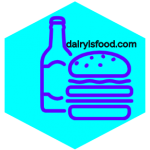Formulated Foods -An Overview
Formulated foods are foods that are prepared or manufactured according to plan from individual components, to yield products having specified physical, chemical and functional properties. These are foods that have been taken apart and put together in a new form. Designed, engineered or formulated from ingredients, they may or may not include additives, vitamins and minerals.
Progress in artificial intelligence, robotics, infinite computing, ubiquitous broadband networks, digital manufacturing, nanomaterials, synthetic biology, and many other exponentially growing technologies will enable us to make greater gains in the next two decades than we have in the previous two hundred years. We will soon have the ability to meet and exceed the basic needs of every man, woman, and child on the planet. Abundance for all is within our grasp and in this fascinations world Formulated foods will have big role to play.
Formulated foods are engineered foods and are same as fabricated foods. There are mainly two types of formulated foods:
- Those designed to simulate natural counterparts and are referred as “analogues” such as meat and dairy analogues. •
- Those no prior counterparts and are manufactured for specific functional properties by mixing two or more food products.
Types of Formulated Foods
| Type | Functionality |
| Baby foods | Foods for infants, pureed or strained fruits and vegetables with cereals, mashed fruits in yoghurt |
| Convenience foods | Snack ,Instant Foods etc |
| Dairy analogues | Formulated non-dairy products, soy based products |
| Geriatric foods | Foods formulated for old aged |
| Low calorie foods | Diet of less than 800 kilocalories per day, for example, Tofu, dried fruits |
| Meat analogues | Texturized vegetable protein foods |
| Snack foods | Extruded products such as roasted chickpeas, herbed cashews, baked kale chips |
| Soft moist foods | Intermediate moisture foods |
| Special purpose dietary foods | Low cholesterol, low fat, sugar free, low sodium, etc |
PRINCIPLES OF FOOD FORMULATIONS
Formulated foods are manufactured by combining the three basic building blocks of the food (protein, fat and carbohydrate) in the way to provide the best texture, flavour and other desirable characteristics. This involves the manipulation of these three components along with water, vitamins, preservation, etc. to design a product with predictable composition, flavour, texture and storage properties.
USE OF PLANT PROTEINS IN FOOD FORMULATION
There are a number of dairy food systems, for example, fluid milk, infant formula, coffee whitener, sweet and sour cream, margarine, cheese, frozen dessert and whipped topping, which offer opportunities for utilizing vegetable proteins in place of milk protein products. Significant progress has been made in developing technologies for utilizing vegetable proteins in a number of simulated dairy food systems; however, several important problem areas must be solved before the vegetable protein can be universally used in such dairy food systems.
Protein fortification in food and beverages is a key imperative to meet global challenges in nutritional deficiencies. Animal proteins typically provide complete protein, but soy is one of the best plant sources that also provide a complete protein. There has been a notable shift toward plant-derived proteins that offer similar or superior functional properties. Sensory properties are important to the successful penetration of plant protein ingredients into applications dominated by animal proteins, as well as for the development of new applications.
The food processing industry is giving increased emphasis to the production and utilization of alternate protein isolate products as functional and nutritional ingredients in an expanding number of formulated food products.
Alternate protein sources such as soy and other vegetable proteins offer additional flexibility in formulating foods due to their economics, availability, functionality and nutritional properties.
Future Development Paths
- Developing soy and vegetable protein isolates with improved flavour, colour and functionality for producing simulated dairy foods.
- Incorporating soy and vegetable proteins into the formulation so that they may function properly for forming stable solutions, emulsions, foams and gels that resemble those in their natural dairy food counterparts.
USE OF DAIRY IN FOOD FORMULATIONS
Any food product made out of milk will obviously be highly nutritious. However, milk has certain limitations like allergenicity, lactose intolerance, cholesterol, saturated fat content, etc. With the advancement in technology, several dairy-derived ingredients are being produced that when used in conjunction with other food ingredients in food manufacture can yield ‘value-added’ products that have balanced nutrition, and exhibiting superior functionalities as well as ‘wellness’ in food application.
This implicates the synergy of dairy with other food ingredients/products; such combination exhibits effects that are probably not obtained when either ingredient is used singly. Dairy along with fruit and vegetable ingredients may get transformed into ‘formulated foods.
PARTING NOTE
Combining the nutraceutical components of dairy and non-dairy based food item, a new ‘value added’ product can emerge that can fulfil the ever-increasing demand for ‘wellness food’ by the ‘health-conscious consumers. With further research on dairy ingredients and their interaction with other food constituents and ingredients, more and more new ‘novel’ products would be developed for the ‘enjoyment’ and ‘wellness’ of the consumers.

